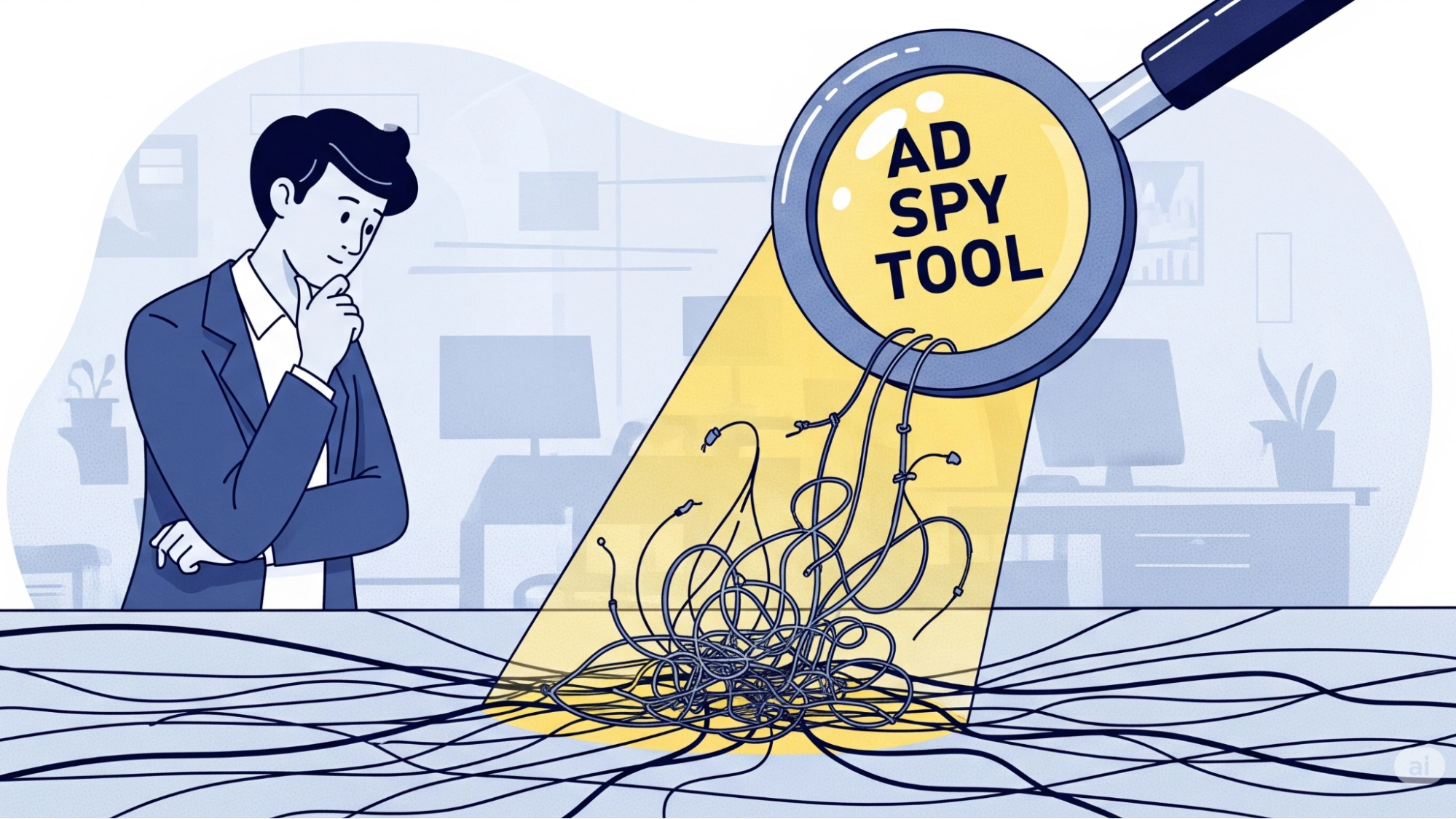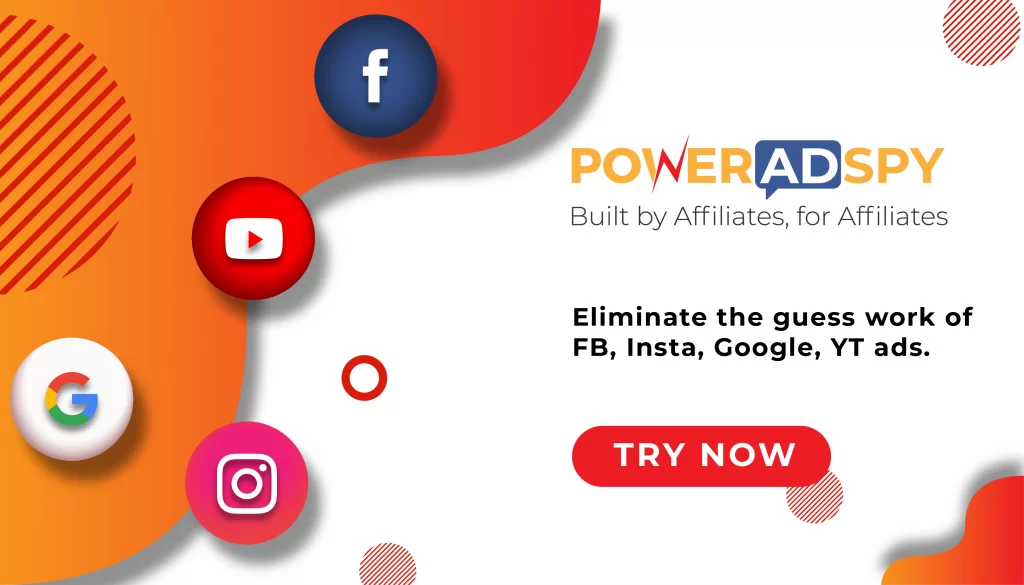10 Customer Pain Points You Can Solve With Ad Spy Tools
When we talk about customer pain points, the focus is usually on our audience, what they want, what frustrates them, and what keeps them from clicking “buy now.”
But what about marketers and advertisers? We have got customer pain points too.
In the age of data, endless ad formats, and competition, we are feeling it more than ever. If we can not identify and solve our campaign challenges, we are just spending money on the wall and hoping something sticks.
Rather than guessing what works, ad spy tools give you a front-row seat to real results.
Let’s break down 10 of the most common marketing customer pain points and show how the right ad spy tool does not just reveal ads, but solves problems.
In a hurry? Listen to the blog instead!
Why Should You Understand Customer Pain Points In Advertising?
If your ads are not performing, it’s probably not because your product is bad; it is because your message is not connecting with what your audience needs.
Every skipped ad, ignored scroll, or low click-through rate is a signal. Most of the time, that signal is simple:
This does not solve my problem.
That is what customer pain points are: the specific challenges your audience is trying to overcome, like:
- I don’t have time for this.
- It’s too complicated.
- I have tried this before, and it did not work.
- This is too expensive.
- This is not made for someone like me.
Understanding these customer pain points is what turns an okay ad into one that gets noticed, clicked, and converted.
Here is the thing: you can’t always guess your way there. That is where advertising research tools, especially ad spy tools like PowerAdSpy, are really useful.
By analyzing real ads that are already working in your industry, you get to identify customer pain points through the hooks, headlines, offers, and formats that are converting right now.
10 Customer Pain Points You Can Solve With Ad Spy Tools
Whether you are a media buyer, agency, e-commerce brand, or content creator, you have likely hit one (or more) of these issues while exploring e-commerce advertising strategies. The right ad spy tool does not just show you ads; it helps you solve these problems.
Let’s break them down.
1. Information Overload
Ad spy tools can display a large number of ads. Instead of getting clear insights, you end up with too much data and no clear direction. It is hard to find what matters when you are sorting through ads that are not relevant. What you need are useful, targeted insights, not a random collection of ads.
Example
You are working on a skincare campaign. Open the AdSpy tool to find Instagram video ads in the same niche. But you see ads for fitness, ebooks, or old promotions that are not even active.
The filters don’t help much, and now you are wasting time with nothing useful to show for it.
Solution
Use an ad spy tool that helps you filter by platform, industry, ad type, language, and CTA. You can use PowerAdSpy to make it easier to focus on preferred niche-based ads. There you can compare what works, not just what’s out there.
2. Lack of Competitive Context
Just seeing ads is not enough. You can’t tell which ads are truly successful or just running for test purposes. Without the right context, it’s tough to analyze ad performance across competitors effectively. You are left guessing which ads work and which ones are just part of an experiment.
Example
Say you are running ads for a fitness brand. You spot a competitor’s ad that looks solid. But you don’t know if it’s driving sales or just something they are testing.
- No engagement data.
- No ad duration.
- No idea how long it’s been live.
You are stuck in the dark, making decisions based on assumptions.
Solution
Use a tool that shows you how long an ad has been active, its engagement trends, and whether it’s running across multiple platforms. This helps you identify real winners, not test runs. Features like view count, ad frequency, and cross-platform consistency give you the full picture so you can benchmark properly.
Also Read!
10 Killer Tactics On How To Improve Social Media Lead Generation
3. Limited Search & Filter Options
Many ad spy tools don’t give you enough options to search properly. They offer narrow filters like platform, region, or industry, but that is not always enough. You also face poor targeting by ad type, language, or call-to-action (CTA), which makes it hard to find the right ads for your needs.
Example
Let’s say you work with a beauty brand, manage Instagram ads, and want to see Instagram ads that use a “Shop Now” button, written in English, and focused on makeup. But the tool you are using only lets you search by Facebook and skincare. You can not filter by CTA or language, so now you are wasting time scrolling through unrelated ads.
Solution
Use a tool that gives better filters. Look for one that lets you search by CTA, ad style, language, funnel stage, and more. That way, you only see the ads that match your goals. Tools like PowerAdSpy let you narrow things down fast, so you can find what works without digging forever.
4. Outdated or Inaccurate Data
One of the biggest issues with some ad spy tools is that the ads shown in the tool may no longer be running. You think you have found a great ad to learn from, but it’s already outdated. There are also delays in refreshing new ad data, so you miss out on what’s trending right now.
Example
You are planning a back-to-school campaign. You spot an ad that looks perfect, great copy, strong visuals. But then you find out it stopped running a month ago. It’s no longer relevant. While you are busy analyzing it, your competitors are already working with newer, better data.
Solution
With a tool, ideally daily or in real-time. This way, you will always see active ads, not old ones.
5. No Creative Insights
Just seeing ads is not enough; you also need to understand why the ad worked. Was it the headline? The hook? The design? Many ad spy tools don’t give this level of detail. There is a lack of breakdowns by things like headline trends, hook styles, or visual types, which makes it hard to learn and improve your ads.
Example
You find a top-performing fitness ad. It’s got a bold headline, clean design, and a strong offer. But the tool does not tell you what part made it successful. Did people click because of the headline? Or was it the video? Without this insight, it’s just a nice ad, not a learning opportunity.
Solution
Break ads down into parts: copy, visuals, hook, CTA, and more. Look for platforms that show common patterns across winning ads. This helps you understand what works, not just what looks good. You can then use those insights to build ads that perform, not just guess.
6. Platform Limitations
Many ad spy tools only focus on Facebook or Instagram, but that is not enough. If your tool does not include platforms like Google, TikTok, YouTube, or others, you are only seeing part of the image. But ad strategies are everywhere, not just in one place.
Cross-platform spying is a growing need.
Example
Say you are running a product launch and want to check how top brands are advertising on YouTube Shorts or TikTok. But your tool only shows Facebook ads. You are missing creative formats, trending hooks, and viral short-form ideas, just because the tool can’t track them.
Solution
Go for an ad spy tool that gives multi-platform access, not just Meta platforms. Like TikTok, YouTube, Google, Pinterest, and more. This gives you a full view of how different brands run ads in different places, so you are not building a strategy with one eye closed.
7. No Funnel or Landing Page View
Seeing an ad is just the start; the real question is, what happens after someone clicks? A lot of tools don’t show you the full data, meaning you can’t view the entire Process from ad → landing page → offer. That makes it hard to study how your competitors convert traffic into sales.
Many marketers struggle to understand how competitors convert users when they can’t see the full path.
Example
You find a skincare ad that’s getting high engagement. But when you try to learn from it, the tool does not show where the ad links to. You can’t see the landing page, the offer, or the form, so you are left guessing what made the campaign work.
Solution
Use tools that include tracking, as they let you click through and explore the full user journey. Some tools even archive the landing pages, so you can study copy, layout, and offer structure. This helps you build smarter funnels, not just better ads.
8. Poor User Interface / Experience
Not every tool is built with marketers in mind. Some make basic tasks, too many clicks, confusing layouts, and slow load times. Non-intuitive dashboards often get in the way, especially when you just want to find and organize ads quickly.
If it takes too long to get what you need, it slows down your work and adds unnecessary friction.
Example
Say you are trying to pull ad inspiration for a last-minute promo. But instead of a quick search, you are digging through tabs, guessing which filter does what, and waiting for the data to load. It turns a 10-minute job into an hour-long headache.
Solution
Pick a tool that feels easy the first time you use it. Look for features like clear navigation, saved searches, preview thumbnails, and one-click exports. A smart layout isn’t just about looks; it helps you get in, get what you need, and move on without wasting time.
9. No Team Collaboration Features
When you are working with a team, whether it’s internal marketing or an agency setup, it’s not just about finding good ads. It’s about sharing, saving, and reviewing them together. Unfortunately, many ad spy tools don’t offer basic team features like shared folders, comments, or tagging.
That means there are no options to save or share ad collections directly, and no workflow tools to keep everyone on the same page.
Example
Imagine you are building a campaign with your design team. You have found 5 strong ad examples, but there’s no way to group them or leave notes inside the tool. You are forced to take screenshots, drop them in Slack or a Google Doc, and explain each one manually, which just adds more back-and-forth.
Solution
Look for ad spy platforms that offer team folders, tagging, notes, and sharing features. Some even let you leave feedback or create collections everyone can access. When your whole team can view and discuss the same ad examples in one place, your workflow gets faster and your ideas get stronger.
10. Pricing vs Value
Not all ad spy tools are priced with small teams or freelancers in mind. Some come with high monthly fees but offer limited data access or insight. This makes it hard to justify the cost, especially when you don’t see a clear return.
Tools can be expensive for freelancers or small teams, and often feel like a bad deal if they don’t deliver enough value for the price.
Example
You sign up for a plan, thinking you will get full access to ad data. But once inside, you realize you are restricted to a handful of searches or limited ad previews, unless you upgrade again. Without full visibility, it’s tough to make the tool worthwhile.
Solution
Choose a platform that offers transparent pricing and flexible plans. Look for features like unlimited searches, full-funnel views, and detailed creative breakdowns, even on lower-tier plans. You should not have to overpay just to get real insights.
Real Customer Pain Point Examples By User Type
Not all marketers face the same challenges. A media buyer’s customer pain points are not the same as a content creator’s, but ad spy tools can solve both. Here is how different roles benefit based on the problems they face:
Media Buyers
Pain Point: We waste too much budget testing weak creatives.
Ad spy tools help media buyers find proven winners fast, so they can skip the guessing and launch ads with confidence.
💡 See what ads have been running longest, across industries and platforms.
Agencies
Pain Point: Clients always want to know what competitors are doing.
Ad spy tools offer a real-time view of competitor campaigns.
💡 Use spy tools to build competitive reports and pitch decks backed by actual ad data.
E-commerce Brands
Pain Point: We run out of ideas for seasonal and promo campaigns.
Spy tools help brands discover ad angles, offers, and hooks already working for similar products.
💡 Swipe inspiration from top-performing creatives in your niche, updated daily.
Affiliate Marketers
Pain Point: “We need ads that convert in niche markets, fast.”
Affiliate pros don’t have time to test endlessly. Spy tools show which offers and angles are already converting in tight verticals.
💡 Filter by offer type, geo, or platform to uncover what’s hot in your space.
Content Creators
Identify Pain Point: “I need hook ideas and trending ad formats.”’
Whether it’s short-form video or static ads, creators use spy tools to spot trends before they explode.
💡 Analyze what top creators and brands are using for hooks, visuals, and CTAs.
Final Thoughts
There’s too much data, too many platforms, and not enough time to figure out what works. And when you are guessing, it’s easy to waste money fast.
That’s why using the right ad spy tool matters. It does not just show you random ads; it helps you learn from the ones that are already working. You get to see what your competitors are doing, what your audience responds to, and how top brands are getting results.
If you are stuck trying to come up with new ideas, chasing trends, or just not seeing results, don’t keep doing it the hard way. Use tools that give you clear answers and help you make better decisions, faster.
You have got the tools. Now it is time to use them smartly.









